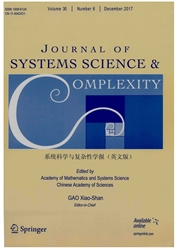

 中文摘要:
中文摘要:
A 最新建议了分布式的动态州的评价算法基于一种 posteriori (地图) 技术是的最大值为力量广义、学习系统。系统模型包含线性变化时间的负担动力学和非线性的大小。这的主要贡献纸是把这个分布式的算法的表演和可行性与几存在作比较在文学的分布式的州的评价算法。模拟在各种各样的操作下面在 IEEE 39 公共汽车和 118 公共汽车系统上被测试条件。结果显示出那这散布了算法比分布式的伪稳定的状态更好表现不使用负担的评价算法动态模型。结果也证明这个分布式的方法的表演离很靠近旁边集中的状态评价方法。这的优点算法过去集中的方法躺着在里面它的低计算复杂性和低通讯负担。因此,分析支持效率和好处在应用程序散布了算法到大规模力量系统。
 英文摘要:
英文摘要:
A newly proposed distributed dynamic state estimation algorithm based on the maximum a posteriori (MAP) technique is generalised and studied for power systems. The system model involves linear time-varying load dynamics and nonlinear measurements. The main contribution of this paper is to compare the performance and feasibility of this distributed algorithm with several existing distributed state estimation algorithms in the literature. Simulations are tested on the IEEE 39-bus and 118-bus systems under various operating conditions. The results show that this distributed algorithm performs better than distributed quasi-steady state estimation algorithms which do not use the load dynamic model. The results also show that the performance of this distributed method is very close to that by the centralized state estimation method. The merits of this algorithm over the centralized method lie in its low computational complexity and low communication load. Hence, the analysis supports the efficiency and benefits of the distributed algorithm in applications to large-scale power systems.
 同期刊论文项目
同期刊论文项目
 同项目期刊论文
同项目期刊论文
 期刊信息
期刊信息
